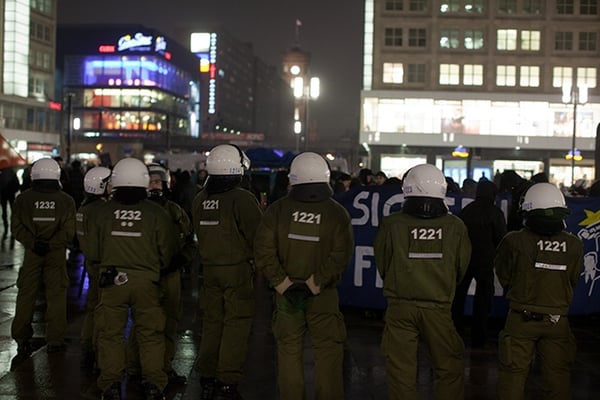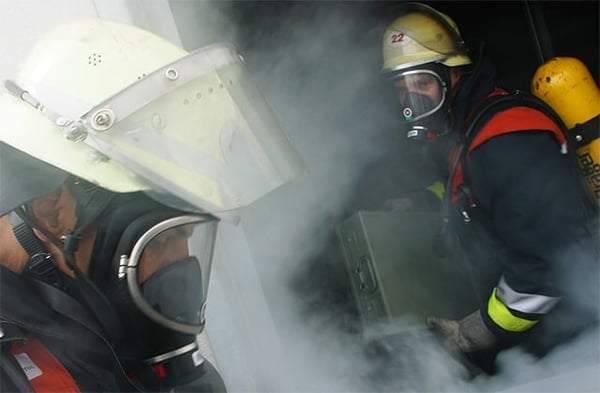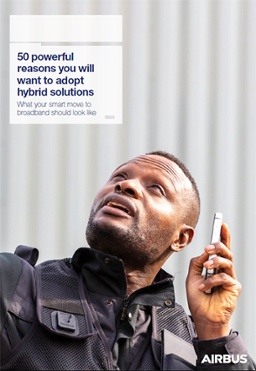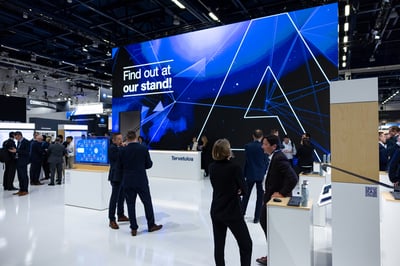Do your key radio users need to keep in touch, even when traffic reaches extreme levels, say during a serious incident or at a major event?
If so, there are two solutions that could be just what you’re looking for - and as a bonus, they are also very cost-effective to set up and use.
Although critical users need constant communications, it is not always possible for them to get the access they want.
Usually, radio users with the correct network rights can move around the TETRA network coverage area and make and receive calls wherever they find themselves. With users spread around the network, this is fine for everyday events and routine work.
The challenges come in extreme situations, such as a fire or riot, when the critical radio users are located within a very small area. When they all use their radios, traffic shoots up. This generates a huge load on the base stations serving them.
In an extreme situation, the massive amounts of traffic may mean that some users have to queue for a turn to speak.

So, how can we guarantee critical users can always communicate?
There are two answers to this question, and you can only find them in Airbus TETRA systems:
- The first solution is based on Subscriber Class Mechanism
- The second solution is newer and it is called Operational Area Feature.
Solution 1: Subscriber Class Mechanism
Using Subscriber Class Mechanism, specific base stations can be reserved for specific user groups. This means that those specific users will be able to use these base stations even when there is heavy traffic on the network.
This approach was proven to be effective in 2008. It was in action at the main stadium during the global athletics event in Beijing, China. This was also the world premiere of the mechanism in operation.

The network operator had already built a TETRA system to cover all the event venues. They also knew that radio traffic would be exceptionally heavy at the main stadium during the opening and closing ceremonies. It was vital that security staff, for example, could communicate at all times, even during peak traffic.
They solved the challenge by dedicating specific base stations only to security personnel and event organizers.
The results speak for themselves. The security teams stayed in touch without any breaks in communications. Even when traffic volumes reached 1.6 million group calls a day!
Solution 2: Operational Area
If you want to go one better, the Airbus TETRA Release 8 delivers a feature that beats even the Subscriber Class Mechanism. It's the Operational Area feature.
With this feature, an operator can configure the network to do both of these:
- Everyone can access any base station in everyday situations
- But when traffic really takes off, certain critical organizations can use particular base stations.
In other words, when the traffic load gets high, the most critical users get some base stations for their exclusive use.
Benefits in the field
There are numerous ways these features can benefit critical communications users in the field.

For example, in a shared network, one user organization such as the police or another emergency service may want exclusive access to their own base stations.
They may need guaranteed communications capacity so that they can deal with a major incident. Or they may want their people at the headquarters to have guaranteed communications capacity.
Air-to-ground communication is another good example. Airborne radios "hear" more distant base stations than ground terminals. You could dedicate certain base stations as "air cells" for airborne radios belonging to a certain subscriber class.
Making it work
What is needed to introduce these features?
Subscriber Class Mechanism
- Requires that the TETRA radio supports the Subscriber Class Mechanism.
- Requires that the TETRA system supports the Subscriber Class Mechanism.
- Each TB3-series base station broadcasts information about which subscriber classes it serves, and radio terminals prefer to operate in the base station that will provide services for its subscriber class.
How to bring the Mechanism into use?
The requirements need to be met, and good news: both the Airbus TETRA system and radios have this support.
In practice, radios are defined as belonging to certain subscriber classes during provisioning. A radio's subscriber class definitions can easily be changed later from the provisioning center, without having to reconfigure them in the field.
Operational Area Feature
- Works with any standard TETRA radio.
- Requires Airbus TETRA System Release 8.
When planning the use of the network – whether for everyday situations or extreme circumstances – it is possible to define which organizations are allowed to use which base stations.
Furthermore, different types of extreme circumstances can have different rules for the organizations. This means that the operational area for each talk group can be accurately defined for each particular need.
This feature is easiest to bring into use with the Tactilon Management tool.
What's so great about the Operational Area Feature?
For the users, this method guarantees that only certain organizations will be able to use certain base stations in certain situations. In contrast, the Subscriber Class Mechanism only gives a strong recommendation for the radio to select the best serving base station that is earmarked for their organization.
This method also saves network resources, since it reserves only those base stations that are needed for group communication.
What's more, no special configuration is needed for the radios.
These are just two examples of the many clever features in Airbus TETRA systems. For example, there are ways to complement your system with broadband, achieving a hybrid solution.
Find out why you should make your smart move to broadband. Download the "50 powerful reasons you will want to adopt hybrid solutions" eBook today!
Editor's note: This blog post was originally published in September 2018 and it has since been updated with fresh information.





